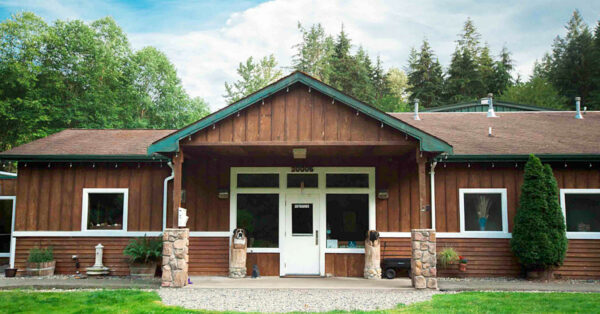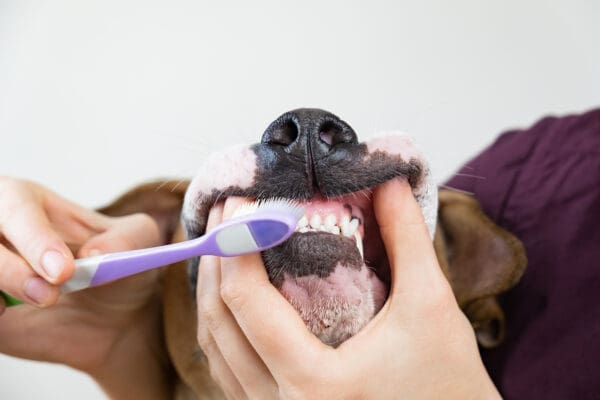
11401 NE 195th St. Bothell, WA 98011
(425) 486-9000 PHONE (425) 486-9002 fax
Natural History
The Red-footed tortoise (Geochelone carbonaria) is native to central/northern South America and Central America. In the wild, they can be found in highly varying habitats, from dry grasslands to humid forests. They are primarily herbivorous, but in the wild have been known to feed on carrion and insects as well as flowers, fruits and vegetation.
The Red-footed tortoise is named for the colorful markings on its legs, which can be anywhere from vibrant red to orange-yellow. Adults can grow to be 12 to 18 inches long, and with proper care can outlive their owners. Females’ shells are generally long and almost rectangular in shape, while males have an hourglass shape giving them the appearance of having a waist.
Husbandry
Housing: Red-footed tortoises can be housed well indoors or outdoors in warm weather, depending on the climate. This species does not hibernate in winter, so if your Red-foot lives outside, it must have a reliable heat source when the weather is cool. Outdoor enclosures must also be predator proofed, which can be difficult. The enclosure should be large enough to offer appropriate space needed for daily exercise. The most commonly recommended form of indoor accommodation for small or medium sized redfoot tortoises is a “turtle table;” instructions for how to make these enclosures are available online. Hatchlings can start out in 10-20 gallon aquariums, while adult enclosures should be at least 6’ x 4’ (and bigger is usually better). A water source (bowl or tub) that is large enough for the tortoise to soak in, yet shallow enough to allow easy entry/exit, should be provided. Naturalistic bedding such as orchid bark, cypress mulch, and peat moss/additive-free top soil mixtures are considered ideal substrates, as this species needs a higher humidity level in order to thrive. However, the substrate needs to be changed frequently to prevent bacterial build up and fungal growth. Substrates to be avoided include sand, gravel, and wood chips.
Heating: During the daytime, red-footed tortoises should have a basking spot of around 90-95F and an ambient temperature range of 75-80F. At night, the lights should be turned off, and temperatures can safely drop to 70F. Appropriate heating elements are ceramic heat emitters, various heat bulbs (provided that any light-emitting heat bulbs are turned off at night), or under tank heaters attached to thermostats. It is important to purchase a temperature gun, or digital thermometers that possess probes, for accurate temperature readings. Plastic dial thermometers, or any thermometer with a fixed placement, are unreliable, and do not adequately gauge thermal gradients inside entire enclosures.
Lighting: UV lighting is necessary for the health of all turtles, and it comes in two equally necessary forms. UVA rays are radiation waves that are needed to promote natural behaviors and stimulate appetite. UVB rays are the other type of radiation waves, necessary for the metabolism of calcium and bone health. A good way to tell the two UV rays apart is “A for appetite, B for bones.” UVB is only provided in 2 different kinds of lights: florescent lights specifically designed for UVB output in reptiles, and mercury vapor bulbs. Some bulbs sold in pet stores are labeled as being “full spectrum,” and packaging may erroneously lead you to believe that a bulb that produces UVA only is enough for a blue tongue, but unless the box specifically states that it offers UVB lighting, it will not be what your pet needs. All UVB bulbs will provide UVA, but not all UVA bulbs will provide UVB. Mercury vapor bulbs are among the longest lasting UVB sources on the market, and these bulbs also produce heat; they are highly recommended for red-footed tortoises.
Fluorescent bulbs for reptiles are another option for providing UV lighting; these come in a few different styles, the most common being the coil variety and the tubular strip variety. Coil fluorescents have the shortest lifespan of all UVB bulbs, and even though they may continue to produce visible light for years, the UVB they provide will only last about 3-4 months. Strip fluorescents are similar, but can last up to 4-6 months. If you purchase a fluorescent UV bulb instead of a mercury vapor bulb, make sure you purchase one with 10.0 output to meet your pet’s needs.
All bulbs should be replaced every 4-6 months, unless their output is being routinely measured with a UVB meter to ensure that they are producing adequate spectrum of lighting.It is important to allow the your tortoise to get within 12 inches of any UVB light source you do provide, as the distance of the light can greatly affect the amount of UVB absorbed. Regardless of what artificial light you provide, nothing beats the power of the sun. Supervised outdoor time during warm summer days will benefit your tortoise tremendously.
Humidity: Red-footed tortoises have high humidity requirements, and thrive in 70-80% humidity. Regular misting of the cage may be necessary to maintain this humidity.
Diet
Red-footed tortoises are omnivores, but in the wild primarily consume plant material with just a small amount of animal proteins in their diet. Providing a varied diet is crucial to their health. Juveniles should be fed daily, while adults can be fed on an every other day schedule. Red-foots are naturally attracted to red, orange, and yellow foods, and this trait can be used to encourage them to eat a varied diet by blending food items together.
- Vegetables: This should make up approximately 40% of the diet. Utilize as wide a variety as possible. Collard greens, mustard greens, turnip greens, dandelion greens, watercress, broccoli, escarole, Swiss chard, parsley, kale, spinach, endive, romaine, bell peppers, carrots, peas, zucchini, pumpkin, parsnips, cooked sweet potatoes, and squash are all excellent choices. Avoid pale greens such as iceberg lettuce or celery tops. Hibiscus flowers, rose blossoms, dandelion leaves/flowers, and other non-toxic plant leaves/flowers can also be offered. Always check with a reputable source before feeding any new plants to your tortoise, as many ornamental plants and weeds are toxic.
- Fruit: This should make up approximately 40% of the diet. Apples, berries, melons, papaya, guava, pineapple, bananas, cactus fruit, grapes, plums, peaches, and tomatoes are all acceptable.
- Animal protein: This should make up <20% of the diet. Red-footed tortoises can develop neurologic issues when fed an entirely plant based diet, but can also develop shell disorders when fed a diet too high in animal protein. In general, we recommend feeding a variety of high quality, low fat protein sources no more often than once weekly to help balance the diet. Mealworms, crickets, roaches, waxworms, bloodworms, earthworms, finely chopped cooked lean beef or beef heart, cooked chicken, and cooked salmon are all acceptable choices. Insects should be “gut-loaded” for at least 24-48 hours prior to feeding to improve their nutritional content (for more information, see our “You Are What You Eat” handout). Moist low-fat cat food can be offered occasionally as well.
- Calcium: Captive box turtles require additional calcium supplementation. Calcium powder is manufactured by many different brands on the market (Fluker’s, Exo-Terra, Rep-Cal, etc); whatever brand you choose, select a product that does not contain phosphorous or vitamin D3. It should be sprinkled onto the food once daily for turtles less than 1 year old, and 2-3 times weekly for adults.
- Multivitamin: Vitamins are also important to promote healthy body function. There are many brands that make multivitamins appropriate for reptiles (Herptivite, Reptivite, Vionate, etc). Vitamins (especially fat soluble vitamins such as A and D) are easy to overdose, and too much vitamin supplementation can actually be harmful. As a general rule, a reptile multivitamin supplement should be sprinkled on the food only once every one to two weeks.
Common Medical Issues
Respiratory Infection: This is a common and deadly illness that affects many captive turtles. Red-footed tortoises are especially susceptible to respiratory ailments. Some of the signs to watch for are runny nose, labored breathing/gasping, loss of appetite, and decreased activity. Respiratory diseases in Redfoot tortoises can be caused by bacterial, fungal, viral, or parasitic infections. Vitamin deficiencies and inappropriately high/low humidity or temperature ranges are also a common cause of respiratory disease in all chelonians. These infections can be contagious to other turtles, and require immediate medical attention.
Parasites: Internal parasites in the gastrointestinal tract can be present in any tortoise, and can exacerbate an already ill animal’s problems. The best way to prevent this from being an issue is to have yearly fecal exams with your veterinarian while maintaining excellent husbandry at home. Tortoises can get these parasites from their food, their environment, and from each other. An excess of parasites should treated by a qualified reptile veterinarian to prevent a decline in health.
Metabolic Bone Disease: Also known as MBD, this is a term used to describe a number of disorders related to the weakening of bones or impaired system function caused by an imbalance of calcium, phosphorus, or vitamin D3. It is one of the most commonly seen health problems in reptiles, and is often the result of inadequate levels of calcium in the diet, or improper UVB lighting which is essential for calcium absorption. Symptoms of MBD range from the mild (lethargy, lack of appetite) to the severe (soft shell, abnormal shell growth, tremors and twitching of the extremities). Veterinary care is a must for any tortoise with suspected MBD.
March 30, 2015
Content of this Care Sheet Courtesy of:
The Center for Bird and Exotic Animal Medicine
11401 NE 195th St. Bothell, WA 98011
(425) 486-9000 PHONE (425) 486-9002 fax



